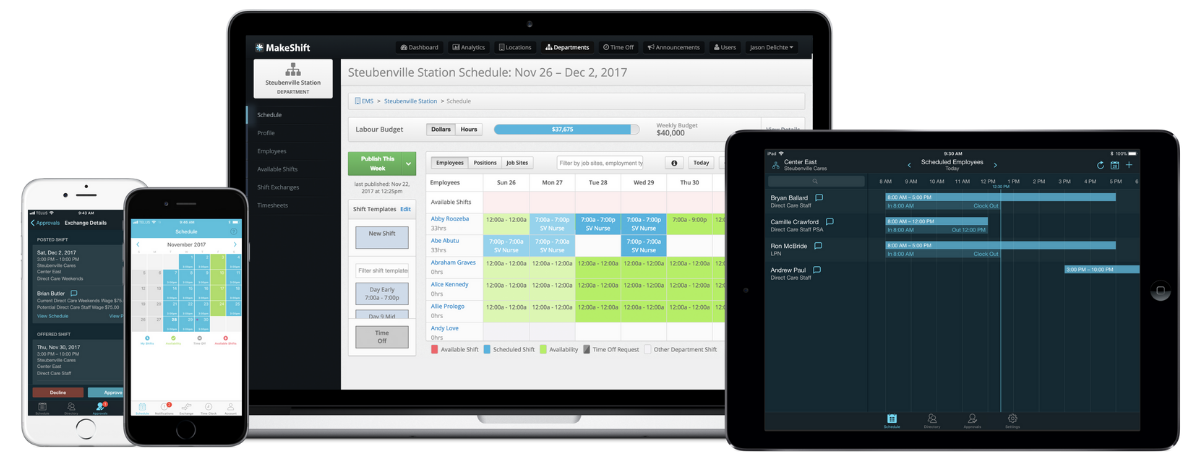“Begin with the End in Mind ®” is habit #2 in Dr. Stephen R. Covey’s 7 Habits of Highly Effective People.
When it comes to your business, keeping the end in mind helps you stay on course to grow and hit your goals. And in order to plan ahead, you’ve got to look back.
That’s where workforce forecasting comes in.
Labor forecasting is a powerful strategic tool. It allows you to analyze past workforce trends and use data-driven insights to shape a prosperous future for your organization.
By harnessing the potential of workforce forecasting today, you'll be on the road to making well-informed decisions, optimizing your workforce, and ultimately enjoying lasting success.
- Workforce Forecasting — What It Is and Why It’s Important
- Challenges in Workforce Forecasting
- How to Implement Workforce Forecasting
- Best Practices for Workforce Forecasting
- AI: The Future of Business and Workforce Forecasting
- Automate Labor Forecasting With MakeShift’s ShiftMate AI
- Labor Forecasting Today Puts You on the Road to Success
Workforce Forecasting — What It Is and Why It’s Important
Workforce forecasting helps you estimate and align your future staffing needs with your business goals.
The process uses historical data, market trends, and internal factors to predict the right number of employees and the skills necessary to plan staff schedules that keep operations running smoothly.
Why Workforce Planning is Important
“Without a plan, even the most brilliant business can get lost. You need to have goals, create milestones, and have a strategy in place to set yourself up for success.” — Yogi Berra.
Staff forecasting is the superstar in a successful business strategy — prioritize this now and reap these lasting benefits.
- Anticipated future staffing needs — Workforce forecasting helps you predict future need for employees based on:
- Anticipated growth
- Market conditions
- Upcoming projects
You can proactively plan recruitment efforts and steer clear of last-minute talent shortages.
- Efficient resource allocation — Allocate resources effectively by accurately forecasting labor requirements. You’ll have the correct number of skilled employees you need scheduled at the right time, avoiding over or understaffing situations.
- Optimal staff scheduling — Employee forecasting plays a crucial role in staff scheduling. By analyzing workload patterns and employee availability, you’ll create schedules that balance the workload, reduce overtime expenses, and make happy employees.
- Talent acquisition and retention — Labor forecasting helps identify organizational skill gaps. Use this info to develop training programs or recruitment strategies to attract and retain the right talent. Forecasting helps you make sure you’ve got people with the skillset necessary to achieve your goals.
4 Workforce Forecasting Challenges
Even the best of planning methods come with challenges. As long as you’re aware of them, you’ll be ahead of the game when you start planning your future workforce.
1. Uncertain market conditions
Uncertain market conditions can lead to unpredictable workloads. This creates a challenge in maintaining a balanced and fair employee staff schedule.
Fluctuating market conditions can result in instability in work hours or shifts, causing disruptions in your employees' work-life balance and affecting their job satisfaction.
2. Inaccurate data or assumptions
Inaccurate data or flawed assumptions in labor forecasting can lead to subpar staff scheduling. This can negatively impact employee workloads and morale.
A lack of reliable data can make it tricky to predict employee availability and preferences for scheduling purposes accurately. This leads to scheduling conflicts and grumbling employees.
Incorrect assumptions about your employees’ skills, preferences, or availability can result in mismatches between scheduled shifts and an employee's capabilities. This can hurt employee performance and be a sucker punch to their self-esteem.
3. Employee turnover and absenteeism
High staff turnover rates disrupt staff scheduling. Low retention causes frequent schedule changes and an increased workload for remaining employees.
This is a recipe for burnout.
Absenteeism creates scheduling challenges, whether due to unplanned absences or extended time off. You may be left scrambling to find replacement employees on short notice, which throws off team dynamics in a big way.
4. Shifting customer demands
We all know that customer demands fluctuate. Sometimes, they’ll turn your business on its head, trying to keep up with them.
Remember folks panic buying toilet paper and canned soup at the start of the pandemic?
Those customer shifts create challenges in staff scheduling. You have to adjust staffing levels and schedules to meet the ebb and flow of customer needs, which impacts your employees' regular working hours and routines.
Shifts in customer demands might also require employees to acquire new skills or jump into different roles quickly. This affects your scheduling and ability to provide adequate training and support during transitions.
How to Implement Workforce Forecasting in 7 Steps
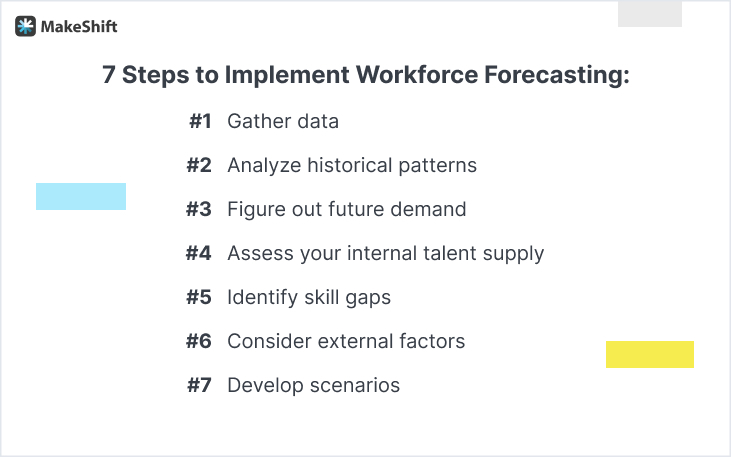
Implementing labor forecasting enables you to make informed decisions about recruitment, training, and resource allocation.
Workforce forecasting enhances your entire operation. You can proactively plan for future workforce needs and keep a competitive edge in today’s ever-evolving business landscape.
Follow these 7 steps to implement workforce forecasting in your business.
1. Gather Data
Collect relevant data from various sources. Include historical workforce data, business performance metrics, industry trends, market forecasts, and any internal or external factors that could impact your workforce.
This data may include:
- Employee headcount
- Turnover rates
- Retirement projections
- Market demand
- Tech advancements
- Economic indicators
2. Analyze Historical Patterns
Look through historical data to identify patterns, trends, and seasonality in your workforce metrics. This analysis helps establish a baseline understanding of your workforce dynamics.
Look for factors like:
- Peak hiring periods
- Turnover patterns
- Correlations between workforce changes & business performance
Pro Tip: Using scheduling software makes this step a breeze.
3. Figure Out Future Demand
Now it’s time to project future demand for the talent you’ll need. Base your projections on your business strategies, growth plans, and anticipated changes.
Consider factors like:
- Expansion into new markets
- Product launches
- New projects
- Organizational changes
- Changes in customer demand
Collaborate with any relevant stakeholders — department heads, project managers, and executives, to get a plan for future staffing needs.
4. Assess Your Internal Talent Supply
Look at your internal talent pool — examine current employees' skills, capabilities, and performance levels.
Identify high-potential team members. You may already have employees well-suited for critical roles. Pay attention to areas where upskilling or reskilling initiatives need to happen.
Don’t forget to account for the impact of future retirements, promotions, or transfers on your internal talent pool.
5. Identify Skill Gaps
The business world is changing — workforce forecasting helps you plan staff scheduling and how best to prep your employees for success down the road.
According to the World Economic Forum, roughly 44% of workers’ skills will be disrupted in the next 5 years.
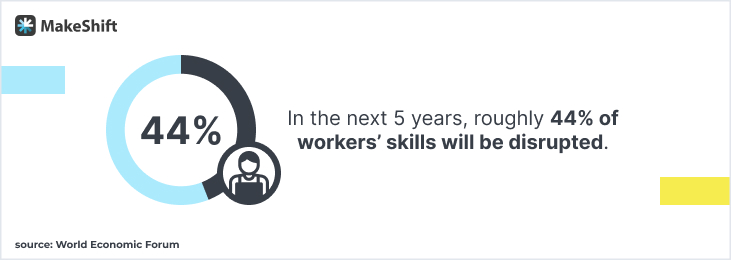
Compare the future demand for skills with your existing workforce's skill set to find any skill gaps.
Once you’ve done that, figure out which critical skills and competencies will be necessary for your company’s future success.
Hint: Many large companies today are focusing on upskilling in analytical thinking.
How do they stack up against the skills currently present in your organization?
This step helps you identify areas where external hiring, training, or talent development initiatives are needed.
6. Consider External Factors
Account for external factors that could influence your workforce planning. These factors may include:
- Changes in labor markets
- Industry trends
- Advancements in technology
- Regulatory changes
- Demographic shifts
Stay updated on market research, industry reports, and emerging trends to understand how the factors above impact the availability and demand for talent.
7. Develop Scenarios
Don’t skip this step. Developing possible scenarios in workforce planning is essential — it helps you prepare for uncertainties and potential changes in the future.
Use stories with characters and plots to illustrate “What-ifs” in a way that helps people really envision them. This helps in coming up with responses to each scenario.
Create multiple scenarios based on different assumptions and potential issues that could pop up. These scenarios are your contingency plans that equip you to be more adaptable and resilient when circumstances change.
For example, wouldn’t it be nice to be more prepared next time something like a global pandemic hits?
8. Formulate Workforce Strategies
Based on your workforce forecast and scenario analysis, develop strategies to address the identified gaps and meet future workforce needs.
These strategies may include:
- Recruitment plans
- Talent acquisition strategies
- Internal mobility programs
- Training and development initiatives
- Succession planning
- Workforce restructuring plans
Best Practices for Workforce Forecasting
There’s a way to begin workforce planning that includes your team members and gets you the most relevant (and helpful) info. These practices will help you plan for future labor the right way.
1. Collaboration between HR, operations, and finance teams
Involve HR, operations, and finance teams in the workforce forecasting process to better understand staffing needs, employee preferences, and financial implications.
This leads to more accurate and employee-centric scheduling decisions.
Collaborative efforts enable teams to consider:
- Employee availability
- Skill requirements
- Workload distribution
- Financial constraints
All this ensures scheduling decisions align with your business goals and employee needs.
You’ll be able to develop schedules that consider employee availability, optimize work-life balance, and ensure fair and equitable shift distribution.
2. Use advanced analytics and forecasting tools
Leveraging analytical and forecasting tools gives you the power to analyze historical data, industry trends, and internal factors more effectively.
This results in more accurate workforce forecasts and optimized staff scheduling.
These tools can consider data points like employee availability, skill levels, workload patterns, and customer demand. Armed with this info, you can generate forecasts that align with your business objectives AND prioritize the preferences and needs of employees.
Using analytics and tools helps:
- Identify scheduling inefficiencies
- Predict staffing gaps or overages
- Optimize the scheduling process
This enhances the employee experience while ensuring adequate coverage.
3. Regular review and adjustment of forecasts
Regularly review and adjust forecasts based on updated data, market conditions, and employee feedback so you can employ more agile and employee-centric scheduling practices.
By periodically revisiting forecasts, you can adapt to changing circumstances, identify and address scheduling issues, and make necessary adjustments.
Doing this helps maintain optimal staffing levels and employee satisfaction.
4. Ongoing monitoring of workforce performance
Monitoring workforce performance metrics, like productivity, employee engagement, and customer satisfaction, allows for an ongoing assessment of the effectiveness of your staff scheduling decisions.
Regular performance monitoring also helps identify areas for improvement, such as:
- Workload balancing
- Skill development
- Scheduling adjustments
Monitoring performance also lets you address excessive overtime, burnout, or skill gaps to make data-driven decisions to support employee well-being.
Artificial Intelligence: The Future of Business and Workforce Forecasting
Businesses rely more heavily on AI to streamline recruitment, hiring, and labor forecasting. And why wouldn’t they? AI has an unparalleled ability to process unthinkable amounts of data and generate accurate predictions.
In 2022, 35% of organizations reported using AI tech in their businesses. That’s a 4% jump from 2021.
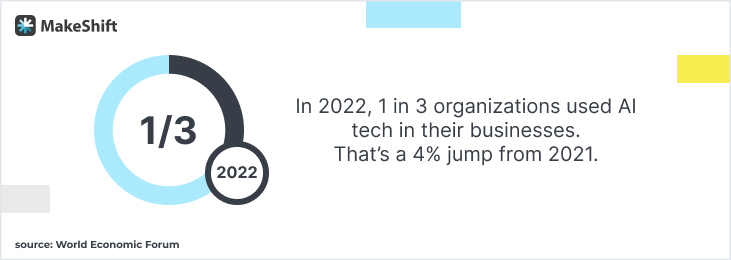
By leveraging historical workforce data, market trends, and external factors, AI-powered forecasting models deliver more precise insights into future labor demands.
And, in a fraction of the time it’d take humans to do the same thing.
This advanced technology can help you streamline and optimize your workforce planning strategies.
AI-driven forecasting can adapt in a flash to changing business environments. AI lets you stay agile and make informed decisions in an ever-developing job market.
As AI evolves, it’ll become an indispensable way for businesses looking to enhance efficiency and keep their competitive edge in workforce management.
Now’s the time to adopt AI in your business.
Automate Labor Forecasting With MakeShift’s ShiftMate AI
ShiftMate AI is your very own AI-powered scheduling platform, ready to do the heavy lifting of workforce forecasting for you.
With ShiftMate AI, we’ve cranked up the volume on our people-first approach to scheduling.
You’ll save serious time in schedule creation and workforce forecasting by putting ShiftMate AI to work for you.
It’ll offer suggestions to help build your staff schedules in 2 shakes — all you have to do is ask…
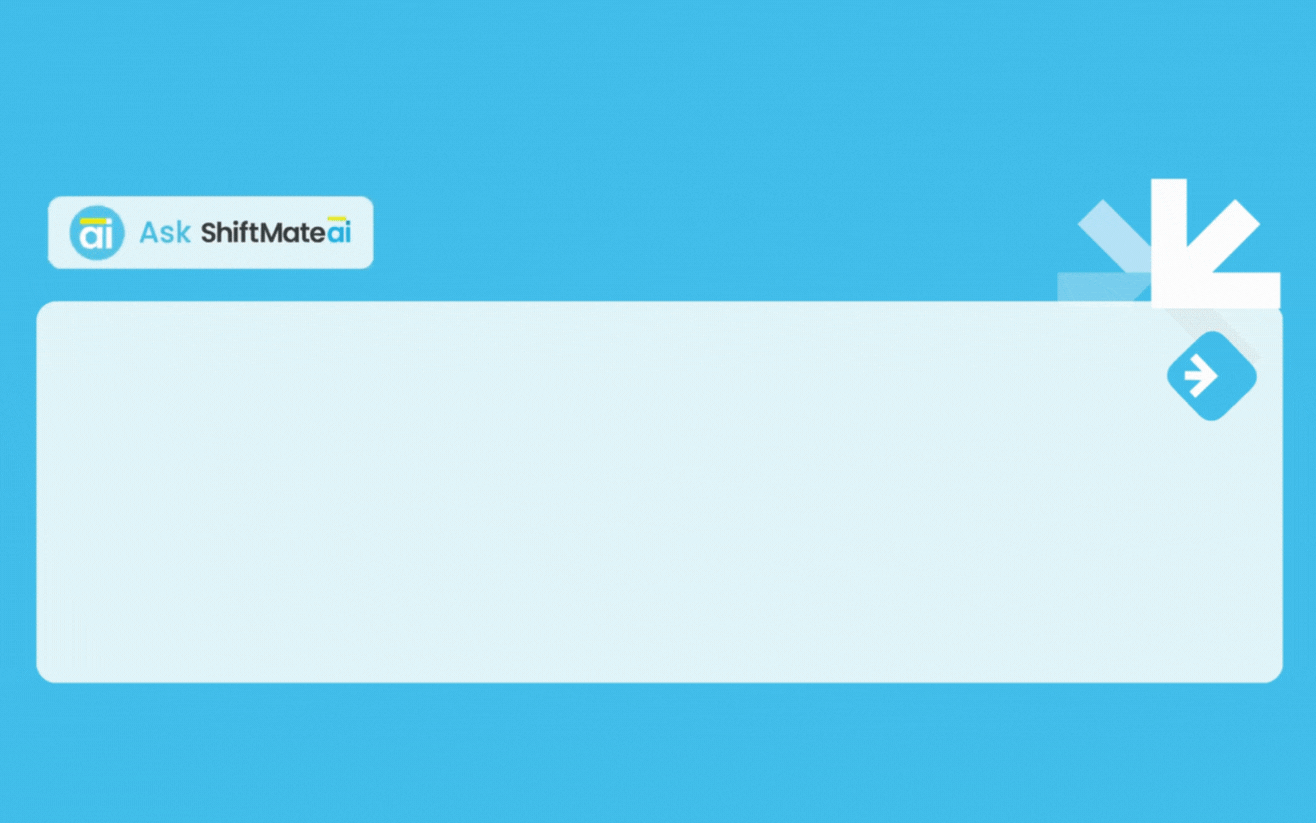
ShiftMate AI filters through last year’s data, anybody on vacation, and employee availability.
Then, within seconds, you’ve got staff schedule recommendations for the next 4 weeks. As you can see, ShiftMate AI makes schedule creation a breeze and does the same for labor forecasting using ShiftPredict powered by Ikigai Labs. 🠋
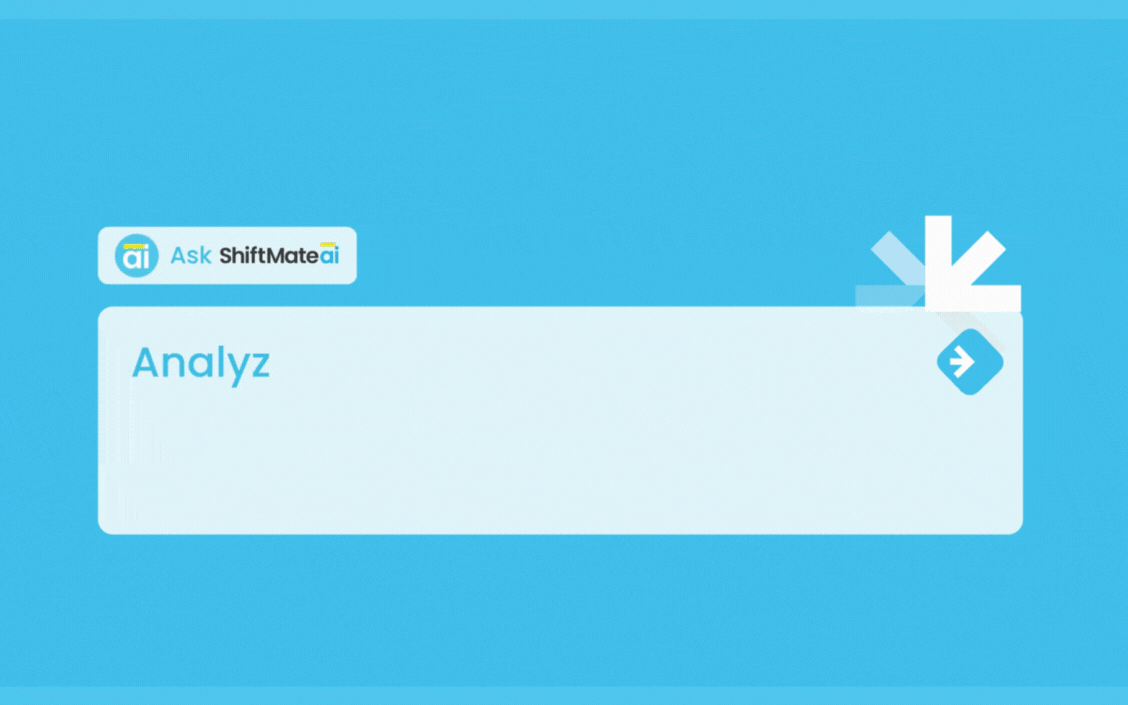
You can even ask it to watch for employees at risk for fatigue or where schedule gaps are.
At MakeShift, we continually rack our brains for ways to make schedule management simple, streamlined, and stress-free.
We’re excited to offer a phased rollout of ShiftMate AI features in 2024.
Labor Forecasting: The Road to Success
Want a roadmap that leads to business success? It starts with implementing workforce forecasting.
Strategic labor planning settles you square in the driver’s seat in the race to business success.
It empowers you to make informed decisions, prioritize your employee’s well-being, and lead your company like a pro.
At MakeShift, we’re obsessed with smarter staff schedule planning that puts people first. Want to see our staff scheduling software in action? Start your free trial today.




